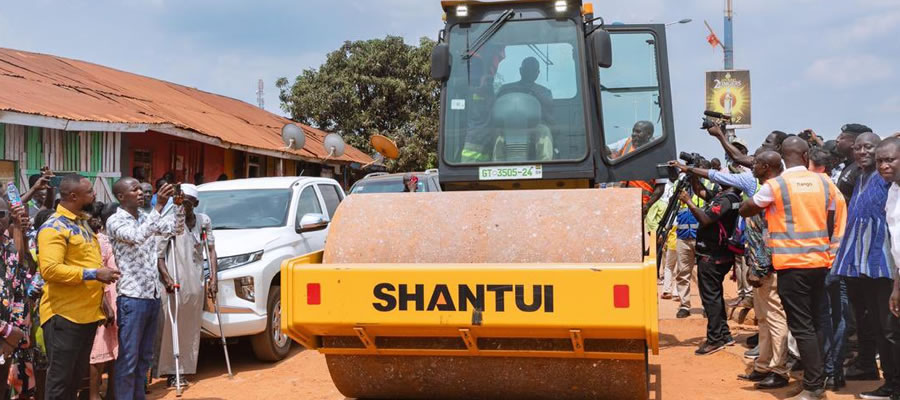

Telecommunication Coverage
There is no telephone exchange center in the District. It relies mostly on four key Mobile Telecommunication Services provided by Vodafone, Mobile Telecommunication Network (MTN), Airtel and Tigo. However, these networks coverage is restricted to the District capital, Jinijini and some few surrounding communities. There is the need to encourage these network providers to extend the services to other parts of the District to facilitate easy communication.
The presence of these facilities tends to make administration and business less expensive. Television coverage is not all that good as most communities in the District do experience poor reception for Ghana Television, TV3 and Metro TV provided one is unable to erect antenna with a height of about 15 meters and above. In recent times majority of the people rely on Multi TV digital-box to receive television transmission.
Community Based Information Centres
Community based information centers (CICs) can be found in several communities such as Jinijini, Domfete, Fetentaa, Nsapor to mention a few. These centers link up to programmes from other external radio stations in the country. These stations help in rapid dissemination of information and also offer platforms for people to air their views and also to explain issues of National concern to the people. Nevertheless, their coverage is limited to the communities in which they operate.
Distribution of Water Supply
Majority of the communities in the District depends on boreholes as the source of drinking water with the exception of some few communities who get access to pipe borne water supply.
Though much has been done, the supply of potable water in the District is inadequate with water coverage of 68.4%.
Distribution of Markets
Markets provide avenues for transactions in buying and selling of goods and services. They contribute significantly to the Assembly’s Internally Generated Fund (IGF) mobilization .The District has two marketing centres with the major markets situated in Jinijini Township and Fetentaa. Farmers and traders convey their produce and goods on market days to Jinijini on markets days where they engage in brisk business.
Distribution of Roads
The main means of transport and other transactions in the District is through the use of road network. About 67 percent of this length of road network is classified as feeder roads. The major roads lead from Jinijini to Berekum, Drobo and Seikwa. Most of the roads are not tarred and is in a very deplorable condition.
Transport Services
Public road transport services are provided by the Ghana Private Road Transport Union (GPRTU) of the Trades Union Congress (TUC), Progressive Transport Owners Association (PROTOA), and other splinter transportation groups. These Unions have branches scattered in major communities within the Community based information centers.
Their services are provided with cargo trucks, mini-trucks, mini-buses and taxis. Due to the poor nature of some of the roads, road transport service providers complain of high vehicle operation costs due to regular breakdown of their vehicles. Part of the high cost is transferred to the passengers in the form of high transport fares especially on roads leading to remote areas like Botokrom, Pruso, Ayimom and other surroundings communities.
Social Amenities
1 Government Clinic, CHPS Compounds, Community Durbar Ground, 1 Community Center at Jinijini, Electricity, Community Markets, Toilet Facilities, School Infrastructures, Small Town Water Systems, Roads, Community Information Centers, Radio Stations, School Pitches, Post Office, Security Post, Lorry Park, 2 SHS 1 Police Post at Fetentaa, 1 Clinic at Fetentaa Refugees Camp .
Date Created : 2/1/2019 4:21:26 AM











 facebook
facebook
 twitter
twitter
 Youtube
Youtube
 +233 593 831 280
+233 593 831 280 0800 430 430
0800 430 430 GPS: GE-231-4383
GPS: GE-231-4383 info@ghanadistricts.com
info@ghanadistricts.com Box GP1044, Accra, Ghana
Box GP1044, Accra, Ghana